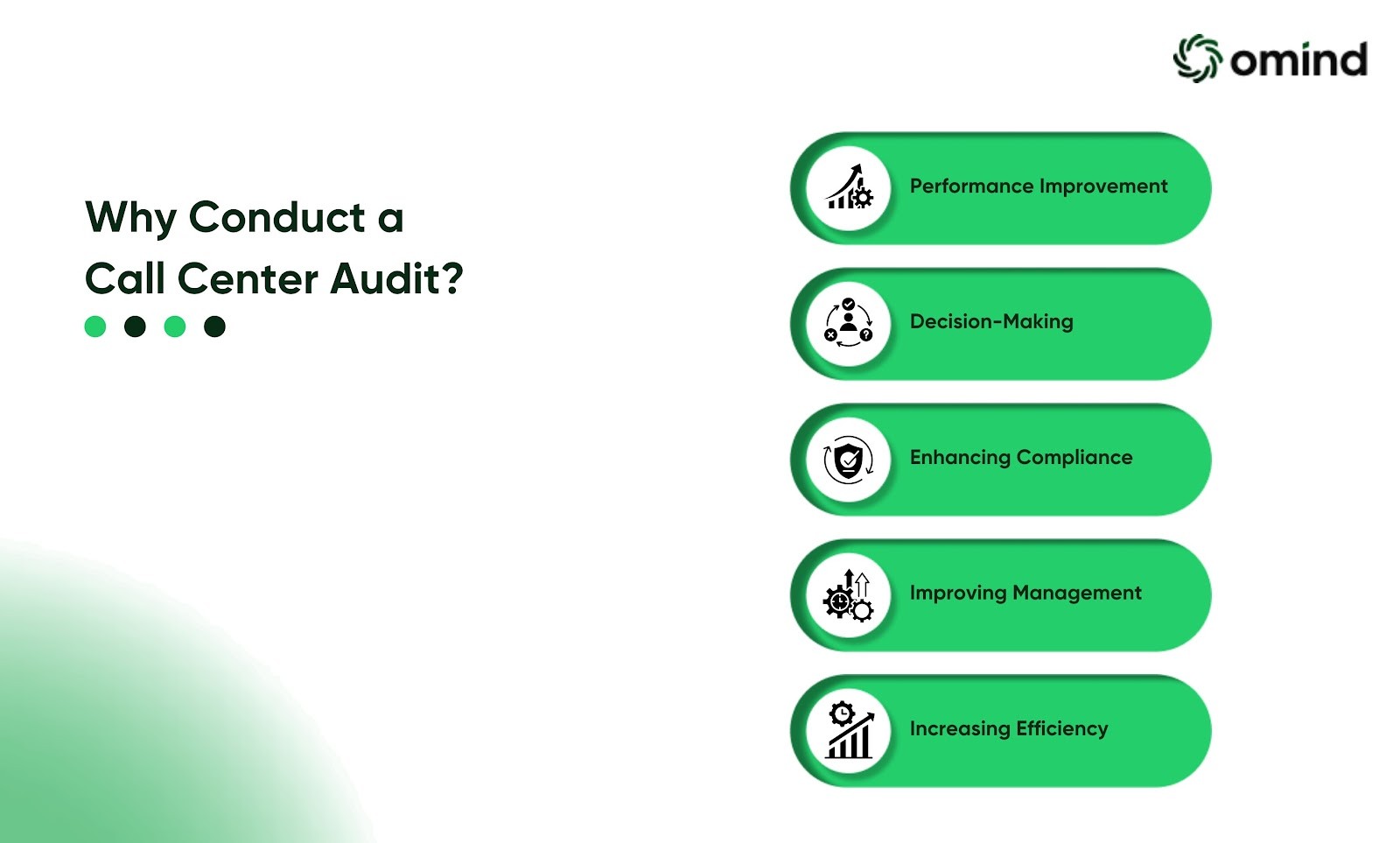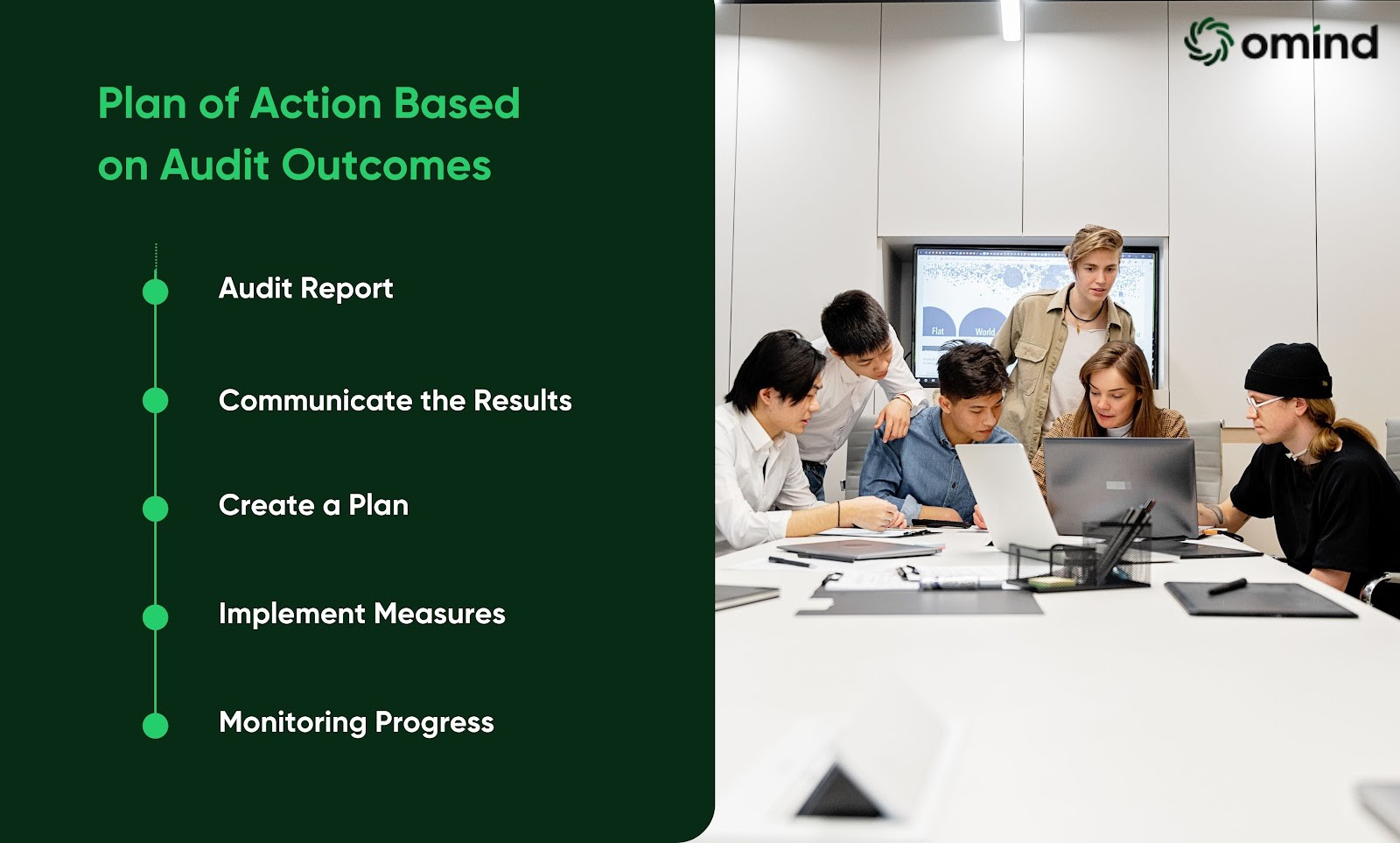Have you ever wondered how well your call center is doing? A call audit is like a checkup for your customer service team to ensure quality and efficiency. It's about listening in on calls to see how things are going and reveal where you want improvement to give the best possible service. Conducting a call audit might seem daunting, but you can manage it effectively with the right tool.
Doing this lets you spot what's working great and what needs to be tailored. Imagine a call center finding ways to make customers happier and agents more confident with the help of call audits. It's an essential process for maintaining high standards and boosting overall performance. Regular auditing ensures consistency and exceeds customer expectations.
Why Conduct a Call Center Audit?

Call center audits can help you see what's working well and needs improvement. Let's see why they matter.
Performance Improvement: Do you want to know if your call center team is hitting the mark? An audit can spot areas where agents shine or struggle. A business may use these details to improve overall performance and identify top performers, leveraging tools like Omind to simplify and enhance this process.
Decision-Making: When you make a decision, it should not be a guess. A call audit gives you sufficient data to make a better choice. Need more agents? New training? The audit can help you decide and allocate resources effectively.
Enhancing Compliance: Following rules and regulations are essential. So, if you have a call audit, it ensures your team follows them. Protect your business and customers with this check and avoid costly penalties and reputation damage.
Improving Management: Want to be a better call center manager? Understanding agent challenges and successes through audits helps you lead effectively. This process builds a better, stronger, and more engaged team.
Increasing Efficiency: Time is money, and this fits well in this area. When a firm checks the call, it will spot ways to streamline processes and reduce handle times. This process also improves agent productivity and customer experience.
In the following process, let’s see how a business can plan and execute a call center audit.
Planning and Executing a Call Center Audit
Planning is building a roadmap that requires thought and organization. Let's break down the key steps.
Your Purpose: Think about what you want to achieve with the audit. Are you looking to improve customer satisfaction, increase agent morale, or something else? Clearly state your goals so that you can check whether you achieved them or not.
Setting Timelines: Create a schedule with clear deadlines for each audit stage. Break the process into smaller steps with checkpoints to ensure everything stays on track. Conduct regular reviews and make necessary adjustments if necessary.
Check Resources: A successful audit requires the right people and tools. Ensure you have the resources, such as budget, staff, and technology, to move forward. Omind provides a comprehensive solution, minimizing the need for multiple tools.
Assign Stakeholders: A company must identify key players who will support and participate in the audit. Give clear roles and responsibilities to your staff to avoid confusion. Involve people from different departments to get a broad perspective.
Collaborate with Experts: If necessary, consider bringing outside experts for more ideas and an unbiased view of your call center. You may get some fresh perspectives, hidden issues, and valuable recommendations.
Now, the planning part is over. Next, Let's examine the essential components of call auditing.
Components of the Auditing Process
Auditing covers several key areas. Let's break down the essential components.
This area involves evaluating how smoothly your call center operates. Check your processes, your technology, and how well your agents perform. A business must explore explorer areas, including bottlenecks, outdated systems, and areas where training could be improved. Omind's solutions can help identify these areas effectively through advanced analytics. Additionally, assess the efficiency of call routing, queue management, and agent scheduling.
Your customers might suggest valuable improvements. Analyze their feedback, surveys, and call recordings to understand their experiences. Use data to identify trends and patterns to offer a better, unified customer experience. Explore customer sentiment analysis to get deeper insights into client's feelings and perceptions.
Now, let's dive deeper into the metrics a call center should track.
Call Audit Center Performance Metrics
Metrics are like the heartbeat of your call center. With this process, you can identify areas for improvement and measure your team's success.
Calls per Hour and Call Outcome: A metric that shows your agents' productivity. This metric tracks the number of calls handled per hour and their outcomes (resolved, transferred, etc.), improving efficiency.
Handle Time and Cost per Call: Handle time shows the average call length, while cost per call calculates the total expense divided by the number of calls. Reducing handle time and cost per call can significantly impact your bottom line.
Conversion and Follow-up Per Lead: If you are a sales-oriented call center, tracking the number of calls needed to convert a lead into a customer is crucial. This follow-up action is also very helpful when measuring the sales team's effectiveness.
Voicemail Returns and Call Abandonment: Through this method, you get customer satisfaction and call center efficiency. High voicemail rates and call abandonment suggest potential wait times or agent availability issues.
Accuracy and Agent Satisfaction: Knowing the number of calls you receive with a tool provided by Omind can assist with staffing and resource allocation. Tracking forecast accuracy helps you refine your predictions. You can also measure the agent's satisfaction with the right employee retention and morality tool.
In the next session, let's focus on individual agent performance.
Agent Performance Metrics

Understanding how individual agents contribute is important. Let's explore how you can do that.
Ensuring agents are available at their desks when a call is scheduled. Tracking adherence to schedules helps identify absenteeism or late arrivals.
Implement a scoring system that allows you to assess agent skills, such as product knowledge, problem-solving skills, and customer satisfaction.
Get the number of calls assigned to each agent and their resolution rates. If an agent is in the area of a high volume of unresolved calls, you should provide additional training or support.
Providing feedback metrics on the areas of improvement is essential for productivity. Give clear and actionable reporting metrics to help agents to understand their strengths and weaknesses.
Beyond individual performance, ensuring compliance is also part of a successful call center.
Ensuring Compliance in Call Centers
Staying up-to-date with rules and industry standards is essential to protect your business and customers.
When you run a call center, you may need to follow many rules and regulations, especially those of the place where you stay. Update yourself with changes in laws and policies to avoid fines and legal problems.
The customer shares the data with you, and you need to protect it with a robust security system. Providers like Omind have strong security features that protect customer data from breaches and threats. Adhering to specific data privacy regulations such as GDPR, CCPA, or other relevant standards protects your customers and builds trust and long-term relationships. So, how can a business identify the threats? Regularly audits and analyzes call recordings, agent interactions, and system processes to avoid any problems in advance.
Now, let's explore how call audits can enhance customer experience.
Call Audits to Enhance Customer Experience
Call audits, conducted using software, will help understand customer sentiment and identify possibilities to improve the customer experience.
Customer Satisfaction (CSAT) Score
A company must evaluate customer satisfaction to determine overall customer happiness. You can identify trends and patterns that impact customer satisfaction levels by analyzing CSAT scores from call interactions. Omind's platform offers detailed CSAT analysis for better insights.
Net Promoter Score (NPS)
NPS is a method for measuring customer loyalty. By connecting NPS scores with call data, you may identify promoters, detractors, and passives. This information will be useful for tailoring your customer engagement strategies and focusing on retaining loyal customers.
Customer Effort Score
It is crucial to understand how much effort customers put into resolving their issues. Analyze these scores and identify pain points in the customer journey.
Once you've identified areas for improvement, it's time to develop an action plan.
Plan of Action Based on Audit Outcomes

Call audit findings are an opportunity for improvement. Let's outline the steps involved.
Audit Report: Once you find something, summarize it into a clear and concise report. Include key metrics, trends, and areas of strength and weakness. This report will serve as a foundation for the next steps.
Communicate the Results: Your findings will be helpful for stakeholders, including management, team leaders, and agents. Communicate the purpose of the audit and the importance of the findings. Encourage open discussion and feedback.
Create a Plan: Prepare a detailed action plan outlining the steps to address the identified issues. Set priorities based on their impact on customer experience and business goals. Assign responsibilities and set deadlines for each action item.
Implement Measures: The next step is to implement your plan, and Omind's platform can provide the necessary resources and support for successful implementation. Provide necessary resources, training, and support to ensure successful implementation.
Monitoring Progress: You're all set now, but there is something left to do. Measure key performance indicators to track the effectiveness of your action plan. Then, assess the changes in customer satisfaction and call center performance.
Doing these things can turn your call center audit into something that leads to good changes.
Best Practices for Conducting Call Audits
Doing an effective call audit may improve call center performance. Here are some best practices for you to follow.
Provide your auditors with clear guidelines for call audits. Outline the purpose, scope, and objectives of the audit. Explain the metrics of measurement, the evaluation criteria, and the frequency of audits.
Create a consistent audit schedule to maintain momentum and accountability. Regular audits help identify trends, track progress, and prevent issues from escalating.
A team is vital for auditing purposes. The auditor should possess excellent listening skills, knowledge of call center operations, and the ability to provide constructive feedback.
Set up call calibration programs for auditors to ensure consistent ratings. Listen to example calls together and discuss how to score them. This helps everyone understand what is expected of them and makes the audit process less subjective.
Get effective call center software with built-in quality monitoring and evaluation features. When you have a strong tool, it can streamline the audit process, generate reports, and provide valuable insights.
The call audit may reveal some findings where you need to provide agent training programs. Focus on areas where improvement is required, such as product knowledge, customer service skills, or compliance adherence.
By following these best practices, you can conduct effective call audits that drive continuous improvement and enhance the overall customer experience.
Wrapping Up
Call auditing is the best practice for assessing performance, identifying areas for improvement, and offering an excellent customer experience (CX). By following these best practices and leveraging data-driven insights, organizations can optimize call center operations, improve agent performance, and drive customer satisfaction.
Omind tool can revolutionize your call center audits. The AI-powered platform provides deep insights into customer interactions, agent performance, and operational efficiency. By automating data analysis and actionable recommendations, Omind simplifies the audit process and improves your call audit efficiency. Book a demo now for more information.
AUTHOR
Team Omind
Empowering Businesses with Unified Customer Experience Platform, Leveraging Advanced AI and Intelligent Automation
PRODUCT
QMS
Share LINK
Related Blogs




